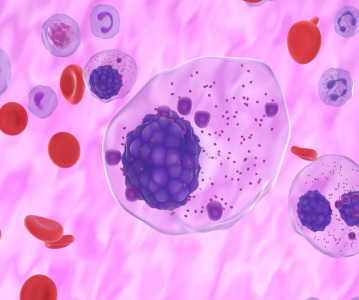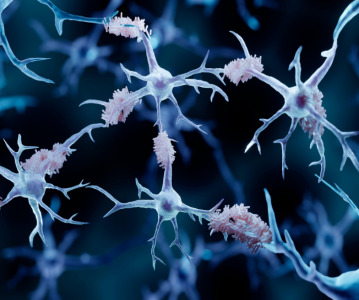Lilly's galcanezumab significantly reduces number of migraine headache days

New results presented at AHS.
Eli Lilly has announced positive results from three Phase III studies of galcanezumab, an investigational treatment for the prevention of episodic and chronic migraine, including late-breaking data on several key secondary endpoints for galcanezumab compared with placebo at both studied doses. Detailed results from these studies (EVOLVE-1, EVOLVE-2 and REGAIN) were presented at the American Headache Society (AHS) annual scientific meeting in Boston.
"The detailed Phase III results represent a crucial step forward for the millions of patients living with migraine who have not yet tried, or found, an effective preventive therapy," said Christi Shaw, president of Lilly Bio-Medicines. "Following more than 25 years of research in migraine, Lilly is excited to help usher in a new era of preventive migraine therapies that may substantially improve the current standard of care for people living with migraine."
The observed safety and tolerability profile was consistent with findings from previous studies of galcanezumab. In these three studies, the most commonly-reported adverse events were injection site reactions.
Based on these results, Lilly will submit a Biologics License Application to the FDA for galcanezumab in the second half of 2017, followed by submissions to other regulatory agencies around the world.
EVOLVE-1 and EVOLVE-2 Study ResultsIn both studies, over the 6-month treatment period, patients with episodic migraine treated with galcanezumab 120 mg and 240 mg doses experienced a statistically significantly greater decrease in the average number of monthly migraine headache days compared with patients treated with placebo, with statistically significant improvements observed at each month starting at one month of treatment.
A statistically significantly greater percentage of patients treated with both doses of galcanezumab achieved at least a 50%, 75% and 100% reduction in the number of migraine headache days compared with placebo over the 6-month treatment period, in both studies after multiplicity adjustment.
EVOLVE-1:
EVOLVE-2:
Patients treated with galcanezumab in both studies also had a statistically significantly greater reduction of monthly migraine headache days with acute medication use compared to placebo over the 6-month treatment period after multiplicity adjustment.
Patients treated with both doses of galcanezumab also saw statistically significant improvement in physical function compared to placebo over the six-month treatment period, as measured by both the Role Function-Restrictive (RF-R) domain score of the Migraine-Specific Quality of Life Questionnaire (MSQ) and the Patient Global Impression of Severity (PGI-S) rating after multiplicity adjustment.
REGAIN Study ResultsOver the 3-month treatment period, patients with chronic migraine treated with galcanezumab 120 mg and 240 mg doses experienced a statistically significantly greater decrease in the average number of monthly migraine headache days compared with patients treated with placebo. Statistically significant improvements for both doses of galcanezumab were observed at each month starting at one month of treatment.
A statistically significantly greater percentage of patients also achieved at least a 50% reduction in the number of migraine headache days compared to placebo over the 3-month treatment period (27.6% for 120 mg and 27.5% for 240 mg compared with 15.4% for placebo, p < 0.001 for both dosing groups) after multiplicity adjustment.
Compared with placebo over the 3-month treatment period, a statistically significantly higher percentage of patients treated with the 240 mg dose of galcanezumab achieved at least a 75% reduction in the number of migraine headache days (8.8% compared with 4.5% for placebo, p < 0.001) after multiplicity adjustment. Patients treated with the 240 mg dose of galcanezumab also achieved a statistically significantly greater reduction in the number of monthly migraine headache days with acute medication use compared to placebo over the 3-month treatment period (an average of 4.3 days compared with 2.2 days for placebo, p < 0.001) after multiplicity adjustment.
Patients treated with 240 mg of galcanezumab also saw statistically significant improvement in physical function compared to placebo over the three-month treatment period, as measured by both the RF-R domain score of the MSQ and PGI-S rating after multiplicity adjustment.
Lilly will submit these findings for publication in peer-reviewed journals in the coming year.
Related News
-
News BioNTech to begin mRNA vaccine manufacturing in Rwanda by 2025
German biotechnology company BioNTech has stated their intentions to begin production at their mRNA vaccine factory in Rwanda by 2025, which will mark the first foreign mRNA vaccine manufacturing site on the continent of Africa. -
News Identifying Alzheimer’s Disease biomarker proteins with whole blood tests
A University of Manchester spin-out pharmaceutical company, PharmaKure, has reported successful study results for the quantification of Alzheimer’s Disease biomarker proteins with a whole blood test. -
News Bill & Melinda Gates Foundation to boost mRNA vaccine initiatives in Africa with USD $40m
To address vaccine inequality and accessibility issues, the Bill & Melinda Gates Foundation aims to deliver USD $40m to various biotech companies and vaccine manufacturers in support of mRNA vaccine development. -
News CPHI Podcast Series: Exploring neurological frontiers in Alzheimer's and beyond
The next episode of the CPHI Podcast Series delves into the science and background behind some recent developments in the field of Alzheimer's disease and neurological disorders. -
News Is patient centricity the future of pharmaceutical manufacturing?
In this interview with Sandra Sánchez y Oldenhage, President of PharmAdvice, she speaks to the importance of considering patients in the manufacturing stages of the pharmaceutical supply chain, and how it can redefine healthcare. -
News CPHI Podcast Series: How to leverage AI for Drug Discovery
Artificial intelligence is the topic of debate in the latest episode from the CPHI Podcast Series, where Digital Editor Lucy Chard speaks with Bill Whitford of DPS Group about the integration of AI in healthcare. -
News Pfizer forges ahead with blood cancer therapy after approval from FDA
Pfizer gains accelerated approval from the US FDA for their new bispecific antibody therapy for multiple myeloma, set to address an unmet need for patients. -
News Alzheimer's drug donanemab deemed effective in landmark clinical trial
Results from the TRAILBLAZER-ALZ 2 Randomised Clinical Trial into the use of donanemab to treat early symptoms of Alzheimer’s disease have been analysed.
Position your company at the heart of the global Pharma industry with a CPHI Online membership
-
Your products and solutions visible to thousands of visitors within the largest Pharma marketplace
-
Generate high-quality, engaged leads for your business, all year round
-
Promote your business as the industry’s thought-leader by hosting your reports, brochures and videos within your profile
-
Your company’s profile boosted at all participating CPHI events
-
An easy-to-use platform with a detailed dashboard showing your leads and performance







